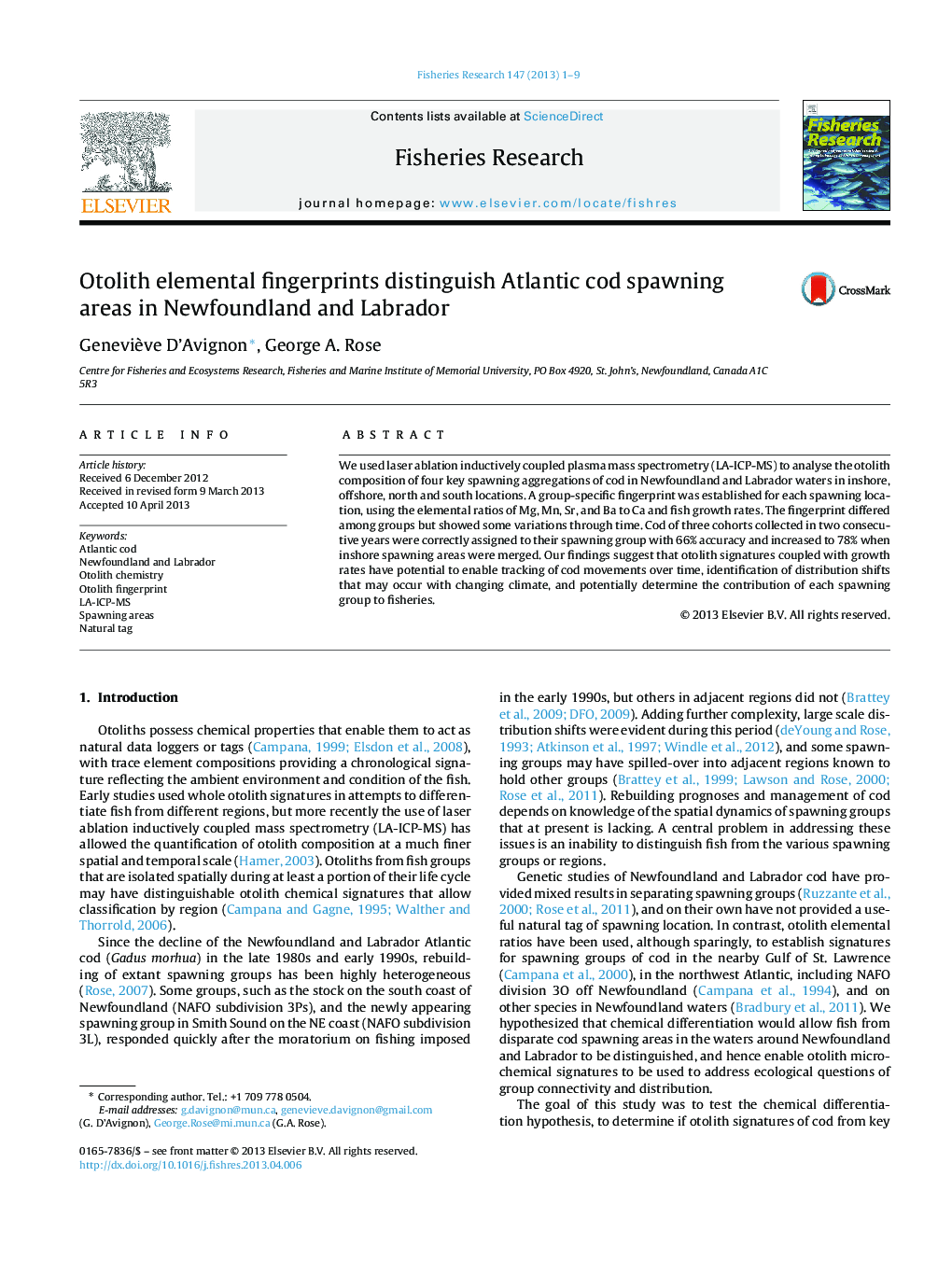| Article ID | Journal | Published Year | Pages | File Type |
|---|---|---|---|---|
| 4543074 | Fisheries Research | 2013 | 9 Pages |
•Ontogeny affects Atlantic cod otolith elemental signatures.•Growth rate and otolith signatures distinguish cod of four spawning areas.•66–78% of cod were correctly re-assigned to their respective spawning area.
We used laser ablation inductively coupled plasma mass spectrometry (LA-ICP-MS) to analyse the otolith composition of four key spawning aggregations of cod in Newfoundland and Labrador waters in inshore, offshore, north and south locations. A group-specific fingerprint was established for each spawning location, using the elemental ratios of Mg, Mn, Sr, and Ba to Ca and fish growth rates. The fingerprint differed among groups but showed some variations through time. Cod of three cohorts collected in two consecutive years were correctly assigned to their spawning group with 66% accuracy and increased to 78% when inshore spawning areas were merged. Our findings suggest that otolith signatures coupled with growth rates have potential to enable tracking of cod movements over time, identification of distribution shifts that may occur with changing climate, and potentially determine the contribution of each spawning group to fisheries.
